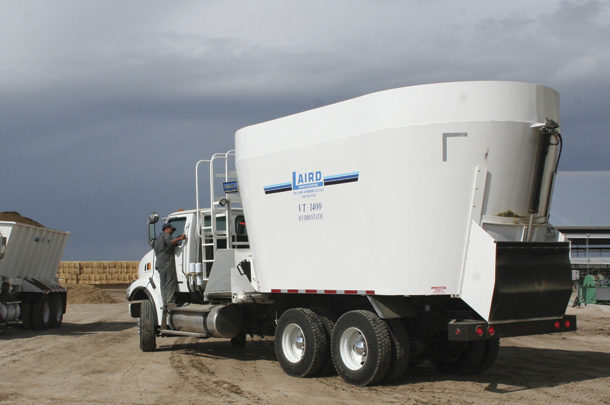Change is hard – especially for cows, who are creatures of habit even more than we are. Any changes in a cow’s routine can quickly add up to compromise her health and performance.
Diet consistency can play a large role in whether a farm is profitable or a cow is productive. It’s imperative to build immunity through the right nutrition. A ration balanced to support immune function can help prevent adverse health events and provide financial returns to producers. The biggest factor that determines success is the human factor. Dairies that have well-trained employees and good communication are the most successful at delivering an accurate, consistent ration day in and day out.
Create consistency in feed mixing and delivery
It’s important to have a systematic approach to evaluate the operational efficiency of a dairy’s feeding program, such as auditing your TMR process and protocols. This type of audit should take a comprehensive look at a dairy’s feeding process, ranging from feed ingredient management and storage to how the feed is mixed, delivered, pushed up and consumed. The goal is for cows to consistently consume a balanced ration, impacting both their health and performance. In order to combat any variations, here are some vital rules to follow:
- Feed at the same time, in the same pen, each day. Altering feeding time will decrease dry matter intake (DMI).
- Do regular feed testing, especially dry matter. Discuss with your nutritionist how often you should do it.
- Feed ingredients that are mold-free and avoid feeds that are excessively wet or warm.
- Do not overfill a mixer, as this will lead to inconsistent and inaccurate mixing.
- Provide feed in all available bunk space.
Empowering people& with knowledge
Review results with your management and feeder teams, highlighting any opportunities for improvement that may have been identified during the audit. In conjunction with this review, consider a feeder training session to help the feed team understand the goals of the feeding program and how they can help keep the diet as accurate and consistent as possible.
Feeder training should focus on four general themes:
1.Safety first – Working with heavy equipment used to feed cows is a huge responsibility. Not only do feeders need to be vigilant and watch out for their safety, but they also must constantly be attentive for others crossing their path or entering the feed area without announcing themselves.
2.Accuracy – Feeders must be focused on ensuring the diet cows eat is as close as possible to the formulated diet.
3.Consistency – The goal is to feed the same ration, at the same time, every day, with regular feed push-ups to ensure that feed is readily available to the cows.
4.Communication – There are always going to be challenges (feed variability/quality, equipment issues, weather, etc.) that can negatively affect the feeder’s ability to deliver a consistent, accurate diet. Feeders should never hesitate to pick up the phone and call the manager or nutritionist if they observe anything that makes them doubt the ability to get an accurate, consistent, well-balanced diet to the cows at the same time every day.
Include feed ingredients that support a healthy immune system
People are certainly the biggest factor in ensuring delivery of an accurate, consistent ration day in and day out. But sometimes things outside of our control can affect the ration and negatively affect immunity and rumen health. For those situations, feed additives that promote immunity and rumen health and stability are a great tool to help keep cows on track. Strive for a product that supports DMI in early lactation, maintenance of bodyweight, efficient feed utilization and milk production over the entire lactation. Work with your nutritionist and veterinarian to choose a product backed by peer-reviewed research to help the herd stay healthy and productive during challenges beyond feeders’ control.
Cows crave consistency and need it to stay healthy and perform at their best. By creating stability in feed mixing and delivery through employee training and feedback, and including a feed ingredient that supports immunity and rumen health, you can set her off on the right hoof.







